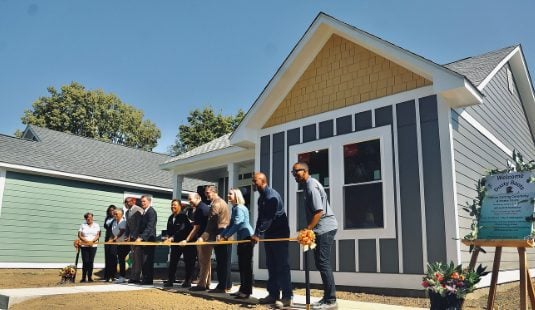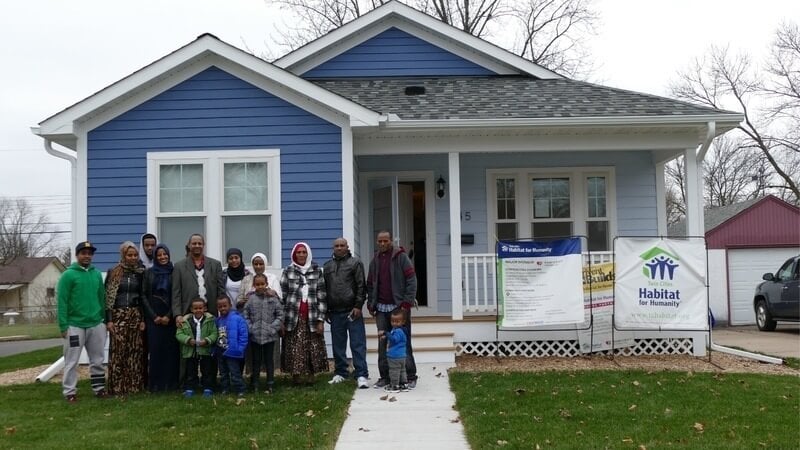Affordable Homeownership Options for First-Time Homebuyers
As the housing market remains to progress, novice homebuyers face special obstacles in safeguarding affordable homeownership choices. Various resources, including entitlement program programs, low-down-payment home mortgages, and targeted grants, have arised to minimize economic pressures. These efforts not only assist in homeownership yet also foster area stability and economic growth. Nonetheless, navigating these options can be complicated, and understanding which paths are most valuable calls for mindful factor to consider. What approaches can possible property owners use to optimize their possibilities in this landscape?
Government Support Programs
Entitlement program programs play a crucial duty in making homeownership possible for lots of people and households. These programs intend to relieve the monetary problem related to purchasing a home, especially for novice purchasers. By providing financial assistance, grants, and tax obligation rewards, federal government campaigns aid link the space in between climbing housing prices and the purchasing power of potential home owners.
Various programs are available at the government, state, and regional levels. For instance, the Federal Real Estate Administration (FHA) provides insurance policy on loans, permitting loan providers to offer more desirable terms, such as lower down settlements and decreased rate of interest. Additionally, state and city governments frequently have their own initiatives, which may include deposit aid programs, homebuyer education and learning programs, and beneficial home loan terms.
These programs are designed to resolve the special difficulties dealt with by low- to moderate-income households, consisting of minimal savings and credit report. By promoting a setting where homeownership is much more obtainable, government aid programs not only support individual goals but likewise contribute to neighborhood stability and economic growth. Comprehending and making use of these sources can significantly boost the potential customers of successful homeownership.
Low-Down-Payment Home Loans
For many hopeful home owners, low-down-payment home mortgages provide a sensible pathway to homeownership, specifically in today's challenging real estate market. These home mortgage options generally need down settlements ranging from 3% to 5%, making it simpler for new purchasers to get in the market without the burden of conserving for a considerable deposit.
Various lending institutions supply low-down-payment programs, including standard financings backed by Fannie Mae and Freddie Mac, as well as government-backed choices like FHA lendings. These home loans are developed to suit people with minimal savings while still offering affordable rates of interest. Significantly, they enable customers to maintain even more cash for various other vital expenditures, such as relocating expenses, home inspections, and prospective restorations.
Nonetheless, possible property owners ought to be mindful of the trade-offs associated with low-down-payment mortgages. A smaller sized deposit may lead to higher monthly payments and the necessity of exclusive home mortgage insurance (PMI), which safeguards lenders in situation of default. It is essential for new buyers to conduct thorough research study and seek advice from with mortgage professionals, ensuring they choose a low-down-payment choice that lines up with their long-term financial objectives.
First-Time Buyer Grants
Several first-time buyers discover that grants can substantially reduce the economic concern of acquiring a home, complementing low-down-payment home mortgage options. These gives, usually offered by state and city governments or charitable organizations, use monetary aid that does not call for settlement, making them an attractive alternative for those getting in the housing market.
Qualification for newbie buyer gives normally relies on earnings, creditworthiness, and the acquisition cost of the home. Lots of programs are made to help low- to moderate-income families, making certain that assistance reaches those that require it most. The application procedure typically includes documentation of financial status, buyer education programs, and often even a commitment to remain in the home for a certain duration.
The quantity useful varies extensively, with some grants giving numerous thousand dollars to help cover closing costs or down settlements. Looking into readily available gives in your area site link is essential, as programs often change and might have particular needs. By leveraging these funds, newbie buyers can make homeownership much more obtainable, inevitably attaining their desire for possessing a home while reducing the preliminary economic pressure.
Cutting-edge Area Efforts
Cutting-edge neighborhood initiatives are playing a crucial function in expanding inexpensive homeownership options for homeowners. These campaigns frequently include collaborative efforts in between regional federal governments, non-profit companies, and economic sector stakeholders to create lasting housing remedies tailored to area requirements.
One noteworthy approach is the facility of area land trust funds (CLTs), which enable homeowners to purchase homes while the land stays possessed by the depend on. This version helps preserve cost in time and protects against speculative cost increases. Furthermore, CLTs commonly supply academic resources and support services to empower new homebuyers.
One more efficient campaign is the growth of mixed-income housing tasks, which mix inexpensive devices with market-rate homes. This method promotes inclusive communities and reduces the preconception frequently related to low-income real estate. Regional federal governments are increasingly supporting zoning reforms to facilitate the construction of accessory dwelling devices (ADUs), which can provide additional rental revenue for property owners navigate to these guys while boosting housing availability.

Tips for Budgeting and Saving

Next, develop a dedicated financial savings account specifically for your future home acquisition. Objective to save a percentage of your income consistently, preferably 20% or more, to build a significant deposit. Make use of automation devices, such as direct deposit or automated transfers, to make conserving simpler and more consistent.
In addition, consider embracing the 50/30/20 guideline: assign 50% of your earnings to requirements, 30% to wants, and 20% to cost savings and financial debt repayment - Affordable Homeownership. This method promotes well balanced financial wellness

Final Thought
In recap, image source budget friendly homeownership alternatives for new homebuyers incorporate various sources such as government help programs, low-down-payment mortgages, and grants. These campaigns not just promote entry into the housing market yet also advertise neighborhood security and economic advancement. By leveraging these monetary tools, people can browse the intricacies of homeownership, ultimately adding to a more equitable housing landscape. Continued assistance and recognition of these programs are necessary for enhancing availability to homeownership opportunities.
As the housing market continues to develop, first-time property buyers deal with one-of-a-kind difficulties in securing budget-friendly homeownership options. By promoting a setting where homeownership is extra available, government aid programs not just sustain individual goals but likewise add to neighborhood stability and economic development. By leveraging these monetary resources, newbie buyers can make homeownership much more available, inevitably attaining their desire of having a home while alleviating the first economic stress.
In summary, budget-friendly homeownership options for new property buyers include various resources such as government support programs, low-down-payment home mortgages, and grants. By leveraging these financial devices, individuals can browse the intricacies of homeownership, eventually adding to a more equitable real estate landscape.
Comments on “Practical Tips for Finding Success in Affordable Homeownership in The Modern Market”